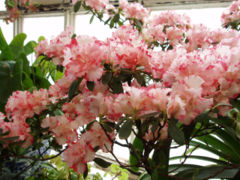Ericales
| Ericales {{{status}}} Fossil range: {{{fossil_range}}}
| ||||||||||||||||||||||||||||||||||||||||||||||||||||||||||||||||||
|---|---|---|---|---|---|---|---|---|---|---|---|---|---|---|---|---|---|---|---|---|---|---|---|---|---|---|---|---|---|---|---|---|---|---|---|---|---|---|---|---|---|---|---|---|---|---|---|---|---|---|---|---|---|---|---|---|---|---|---|---|---|---|---|---|---|---|
 Rhododendron simsii | ||||||||||||||||||||||||||||||||||||||||||||||||||||||||||||||||||
| Plant Info | ||||||||||||||||||||||||||||||||||||||||||||||||||||||||||||||||||
| ||||||||||||||||||||||||||||||||||||||||||||||||||||||||||||||||||
| Scientific classification | ||||||||||||||||||||||||||||||||||||||||||||||||||||||||||||||||||
| ||||||||||||||||||||||||||||||||||||||||||||||||||||||||||||||||||
| [[{{{diversity_link}}}|Diversity]] | ||||||||||||||||||||||||||||||||||||||||||||||||||||||||||||||||||
| {{{diversity}}} | ||||||||||||||||||||||||||||||||||||||||||||||||||||||||||||||||||
| Binomial name | ||||||||||||||||||||||||||||||||||||||||||||||||||||||||||||||||||
| {{{binomial}}} | ||||||||||||||||||||||||||||||||||||||||||||||||||||||||||||||||||
| Trinomial name | ||||||||||||||||||||||||||||||||||||||||||||||||||||||||||||||||||
| {{{trinomial}}} | ||||||||||||||||||||||||||||||||||||||||||||||||||||||||||||||||||
| Type Species | ||||||||||||||||||||||||||||||||||||||||||||||||||||||||||||||||||
| {{{type_species}}} | ||||||||||||||||||||||||||||||||||||||||||||||||||||||||||||||||||
| Families | ||||||||||||||||||||||||||||||||||||||||||||||||||||||||||||||||||
| See text. | ||||||||||||||||||||||||||||||||||||||||||||||||||||||||||||||||||
| [[Image:{{{range_map}}}|{{{range_map_width}}}|]] | ||||||||||||||||||||||||||||||||||||||||||||||||||||||||||||||||||
| Synonyms | ||||||||||||||||||||||||||||||||||||||||||||||||||||||||||||||||||
| {{{synonyms}}} |
The Ericales are a large and diverse order of dicotyledons, including for example tea, persimmon, blueberry, Brazil nut, and azalea. The order includes trees and bushes, lianas and herbaceous plants. Together with ordinary autophytic plants, the Ericales include chlorophyll-deficient myco-heterotrophic plants (e. g. Sarcodes sanguinea) and carnivorous plants (e. g. genus Sarracenia).
Many species have five petals, often grown together.
Mycorrhiza is an interesting property, frequently associated with the Ericales. Indeed, the symbiosis with root fungi is quite common among the order representatives, and there are even three kinds of it which can be found exclusively among Ericales (namely, ericoid, arbutoid and monotropoid mycorrhiza). In additional, some families among the order are notable for their exceptional ability to accumulate aluminum (Jansen et al., 2004).
Ericales are a cosmopolitic order. Areas of distribution of families vary largely - while some are restricted to tropics, others exist mainly in Arctic or temperate regions. The entire order contains over 8000 species, of which the Ericaceae account for 2000-4000 species (by various estimates).
Contents |
Economical importance
The most profitable plant in the order is tea (Camellia sinensis) from the Theaceae family. The order also includes some edible fruits, including kiwi fruit (Actinidia deliciosa), persimmon (genus Diospyros), blueberry, huckleberry and cranberry, Brazil nut, and Mamey sapote. The order also includes shea (Vitellaria paradoxa), which is the major dietary lipid source for millions of sub-Saharan Africans. Many Ericales species are cultivated for their showy flowers: well-known examples are azalea, rhododendron, camellia, polyanthus, cyclamen, phlox, and busy Lizzie.
Classification
The following families are typical of newer classifications:
- Family Actinidiaceae (kiwifruit family)
- Family Balsaminaceae (balsam family)
- Family Clethraceae (clethra family)
- Family Cyrillaceae (cyrilla family)
- Family Diapensiaceae
- Family Ebenaceae (ebony family)
- Family Ericaceae (heath, rhododendron, and blueberry family)
- Family Fouquieriaceae (fouquieria family)
- Family Lecythidaceae (Brazil nut family)
- Family Maesaceae
- Family Marcgraviaceae
- Family Mitrastemonaceae
- Family Myrsinaceae (cyclamen and scarlet pimpernel family)
- Family Pellicieraceae
- Family Pentaphyllacaceae
- Family Polemoniaceae (phlox family)
- Family Primulaceae (primrose family)
- Family Roridulaceae
- Family Sapotaceae (sapodilla family)
- Family Sarraceniaceae (American pitcher plant family)
- Family Sladeniaceae
- Family Styracaceae (silverbell and snowbell family)
- Family Symplocaceae (sapphireberry family)
- Family Ternstroemiaceae
- Family Tetrameristaceae
- Family Theaceae (tea and camellia family)
- Family Theophrastaceae
These make up a basal group of asterids. Under the Cronquist system, the Ericales included a smaller group of plants, which were placed among the Dilleniidae:
- Family Ericaceae
- Family Cyrillaceae
- Family Clethraceae
- Family Grubbiaceae
- Family Empetraceae
- Family Epacridaceae
- Family Pyrolaceae
- Family Monotropaceae
References
- B. C. J. du Mortier (1829). Analyse des Familles de Plantes : avec l'indication des principaux genres qui s'y rattachent, 28. Imprimerie de J. Casterman, Tournay.
- S. Jansen, T. Watanabe, P. Caris, K. Geuten, F. Lens, N. Pyck, E. Smets (2004). The Distribution and Phylogeny of Aluminium Accumulating Plants in the Ericales. Plant Biology (Stuttgart) 6, 498-505. Thieme, Stuttgart. (Available online: DOI | Abstract)
- W. S. Judd, C. S. Campbell, E. A. Kellogg, P. F. Stevens, M. J. Donoghue (2002). Plant Systematics: A Phylogenetic Approach, 2nd edition. pp. 425-436 (Ericales). Sinauer Associates, Sunderland, Massachusetts. ISBN 0-87893-403-0.
- E. Smets, N. Pyck (Feb 2003). Ericales (Rhododendron). In: Nature Encyclopedia of Life Sciences. Nature Publishing Group, London. (Available online: ELS Site)
- Arne A. Anderberg, Bertil Stahl, Mari Kallersjo (May 2000). "Maesaceae, a New Primuloid Family in the Order Ericales s.l.". Taxon 49 (2): 183–187. doi:10.2307/1223834.